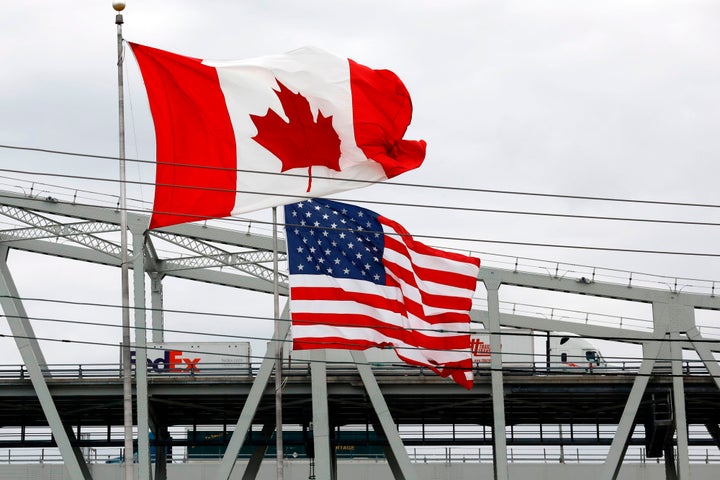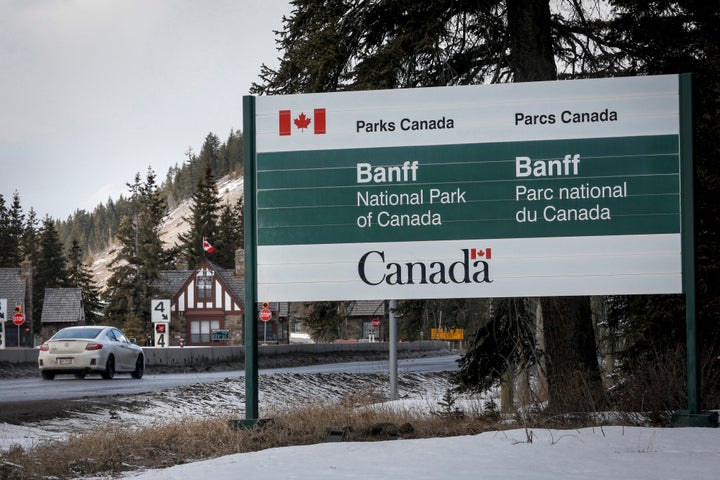
OTTAWA — Canadian and American border agents are not seeing the same trends in the wake of the closure that has stopped all non-essential travel between the two countries since March 21 because of the COVID-19 pandemic.
More than 2,100 people were turned away attempting to enter America at land border between March and June, according to numbers provided by the U.S. Customs and Border Protection.
Canadian border agents, meanwhile, have been a bit busier turning away Americans travellers.
According to the Canada Border Services Agency (CBSA), more than 6,000 travellers were denied entry into Canada at land, rail, and marine ports between March 22 and July 22.
Eighty-nine per cent of those travellers were Americans who wanted to enter Canada for tourism/sightseeing, recreation, and non-essential shopping reasons, the CBSA said.
Watch: Njoo says vast COVID-19 disparity a problem for Canada-U.S. travel. Story continues below video.
Before the border lockdown, Statistics Canada shows nearly three-quarters of the trips Canadians made to the U.S. were by car.
The number of car trips Americans made into Canada dropped 96 per cent in June compared to the same time last year. Similarly, StatCan reports the number of return trips made to the U.S by Canadians is down 94 per cent due to new border rules.
Current measures are set to expire Aug. 31, pending a new agreement between the two countries to extend the closure to limit potential cross-border coronavirus transmissions.
But the new rules have prompted some travellers to get creative to bypass border guards.
The CBSA announced new rules this week to crack down on Americans who’ve been able to cross into Canada using the so-called “Alaska loophole.”
It comes after reports of American tourists dining in Banff, Alta. in June, despite the closed border to non-essential travellers. Mounties have also fined Americans hiking near Lake Louise for violating the Public Health Act this summer.

Under the new rules, American travellers wishing to drive through Canada to get to Alaska will be allowed “a reasonable period of stay” while they get to their intended port of exit. But that grace period for travel won’t be the same for everyone and will vary case by case.
“The length of stay will be determined by a border services officer based on multiple factors including travel trends and the distance between the entry and the exit port of entry,” CBSA spokesperson Rebecca Purdy told HuffPost Canada.
The new rules also prohibit Alaska-bound travellers from indulging in tourism and visiting national parks on their way to their destination.
American travellers driving north will be given tags to hang onto their rear-view mirrors indicating a date they must leave the country by. It will also include public health and safety tips and Quarantine and Emergencies Acts conditions.
In the U.S., a grim milestone was passed this week with the number of deaths linked to the coronavirus surpassing 150,000.
The death toll in the U.S. has outpaced the rate in Canada, where COVID-19 has been linked to the 8,929 deaths as of Friday, according to the federal public health agency.
“All of us in Canada, the general population, certainly public health officials are looking very carefully and with some alarm to what’s happening in the U.S.”
- Howard Njoo, deputy chief public health officer
America’s response to the pandemic has been criticized by health officials around the world for lacking coordination in leadership in containing the highly transmissible virus.
Anthony Fauci, director of the National Institute of Allergy and Infectious Diseases, told the U.S. House oversight and reform committee on the coronavirus pandemic Friday that a “diversity in response” from different states has led the country to its current situation.
His Canadian counterpart, Deputy Chief Public Health Officer Howard Njoo, called spikes in cases across the U.S. after a rush to reopen economies a “cautionary tale.”
“All of us in Canada, the general population, certainly public health officials are looking very carefully and with some alarm to what’s happening in the U.S.,” he told reporters in Ottawa last week.
Njoo said it’s important for political leaders to view the pandemic through a non-partisan lens. He compared politicians to rowers, explaining the first step to an effective response plan is acknowledging you’re in the same boat.
The other key, he said, is rowing in the same direction.